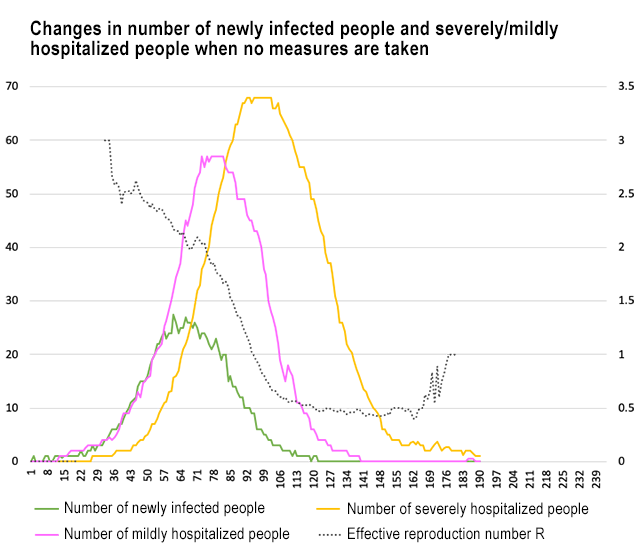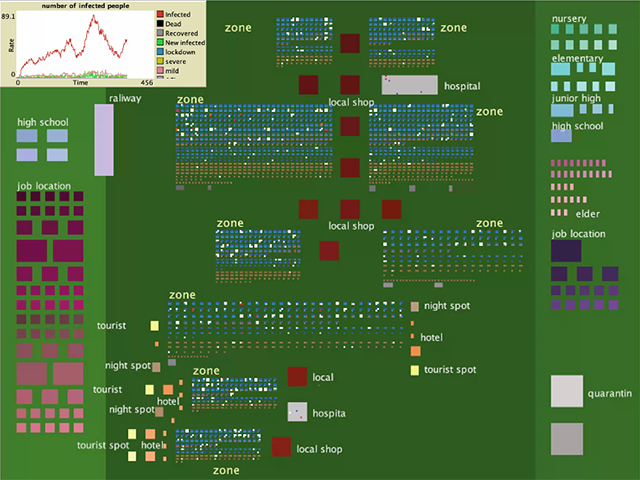EFFORTS OF UNIVERSITY OF TSUKUBAEfforts of University of Tsukuba

A novel simulation of the effect of infectious disease control using artificial intelligence
Much energy is now being devoted to data sciences, relying on artificial intelligence (AI) and other
tools to effectively utilize enormous amounts of data (“big data”) that have accumulated in corporations
and in society in general, for marketing and other purposes.
Here, new ways of thinking based on simulations, which utilize past data to try to envision the future, become relevant. And among these are an approach to diverse problems of society centered on what are called
“agent-based models” in which the patterns of activity of individuals are modeled and used to predict
the behavior of entire groups.
The Kurahashi laboratory is using this method to conduct simulations of the effects of measures to
address infection with the novel coronavirus. From the initial period of the outbreak, it investigated
the kind of behavior that people exhibited due to reduction of economic activity, limitations on
movement, and other measures, and the extent of the spread of infections as a result, using a database
of all of the 80,000 or so infected persons in Wuhan, China, which is said to be where the virus
originated, and proactively reporting the results of numerous simulations. Such research results have
also been used to make policy decisions in Europe and North America.
Infectious diseases seem to appear almost annually, whether they are new strains of the influenza
virus, SARS, Zika fever, dengue fever, or rubella. Upon each outbreak, data from the WHO and from the National Institute of Infectious Diseases is analyzed, but each outbreak has a different infection mechanism,
Even when the basic model is the same, the parameters used are completely different.
●Short Paper
Estimating Effectiveness of Preventing Measures for 2019 Novel Coronavirus Diseases (COVID-19)
Transactions of the Japanese Society for Artificial Intelligence, Volume 35 (2020) Issue 3
Kurahashi Setsuya
https://doi.org/10.1527/tjsai.D-K28
●Related Link
Preventive measures that balance the local economy and infection control, Employing the University Wisdom to Fight against the COVID-19 Crisis
https://www.osi.tsukuba.ac.jp/fight_covid19/kurahashi/


ProfessorFaculty of Business Sciences




